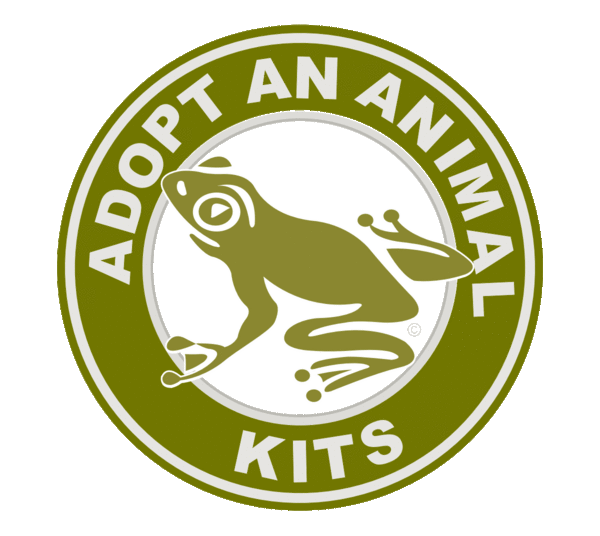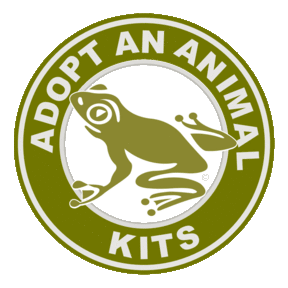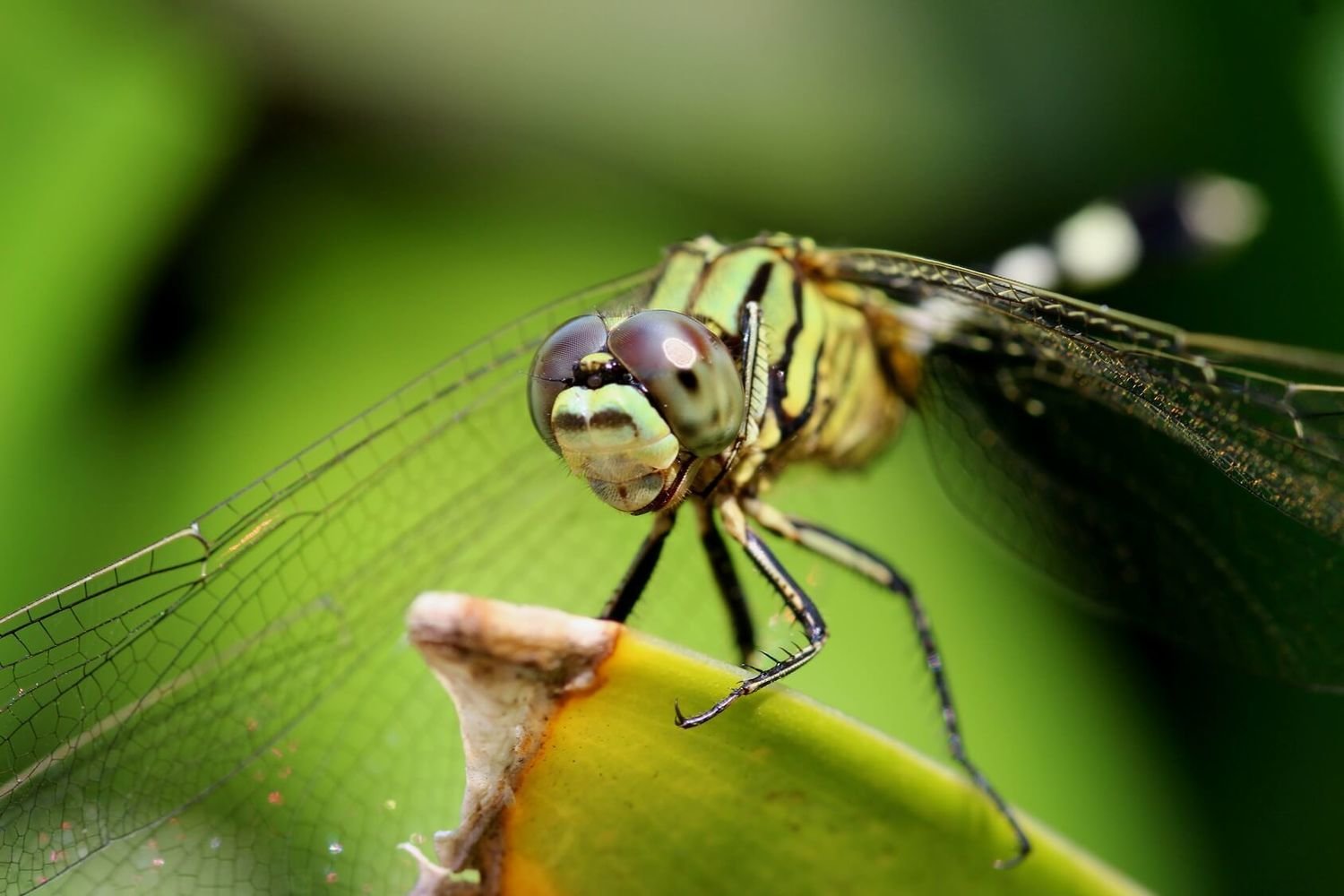

Adopt An Animal Kits
Adopt An Animal symbolically. Your Adopt An Animal Kit comes in a Deluxe Folder and includes: Glossy Photo of Your Adopted Animal; Adopt An Animal Adoption Certificate; Fact Sheet About Your Adopted Animal; Help Animals Info Cards Packed With Information On Animal Issues & How You Can Help Animals And The Environment. Adopt An Animal for Yourself or as a Gift.
Adopt A Dragonfly
Adopt A Dragonfly
Your Adopt A Dragonfly Kit comes in a Deluxe Folder and includes:
- Glossy Photo Of Your Adopted Dragonfly
- Adopt A Dragonfly Adoption Certificate
- Fact Sheet About Your Adopted Dragonfly
- Help Animals Info Cards Packed With Information On Animal Issues & How You Can Help Animals And The Environment
Adopt A Dragonfly Kits make great gifts and can be sent directly to the recipient. Simply supply the recipient's name and mailing address as shipping information. We'll even include a letter stating the Adopt An Animal Kit is from you.
Adopt An Animal symbolic adoption is a one time fee. Adopt an animal for yourself or order an Adopt An Animal Kit as a gift. Help make a difference for animals - Adopt An Animal Today!
Adopt A Dragonfly
A dragonfly is an insect belonging to the suborder Anisoptera. Dragonflies have large multifaceted eyes, two pairs of strong transparent wings, sometimes with colored patches, and an elongated body. Many dragonflies have brilliant iridescent or metallic colors produced by structural coloration, making them conspicuous in flight.
There are about 3000 species of dragonflies in the world today. Most are tropical, with a few species in temperate regions.
Dragonflies can be mistaken for the related group, damselflies (Zygoptera), which are similar but usually lighter in build. The wings of most dragonflies are held flat and away from the body when at rest, while damselflies hold the wings folded, along or above the abdomen. Dragonflies are agile fliers while damselflies have a weaker, fluttery flight.
Dragonflies are predators, both during the aquatic larval stage, when they are known as nymphs, and as adults. Up to several years of the insect's life is spent as a nymph living in freshwater; the adults may be on the wing for just a few days or weeks. They are fast agile fliers, sometimes migrating across oceans, and are often but not always found near water.
Many dragonflies, particularly males, are territorial. Some defend a territory against others of their own species, some against other species of dragonfly and a few against insects in unrelated groups. Defending a breeding territory is fairly common among male dragonflies, especially among species that congregate around ponds in large numbers. The territory will contain desirable features such as a sunlit stretch of shallow water, a special plant species or a particular substrate that is necessary for egg-laying. The territory may be small or large, depending on its quality, the time of day and the number of competitors, and may be held for a few minutes or several hours. Some dragonflies signal ownership with striking colors on their face, abdomen, legs or wings. Other dragonflies engage in aerial dogfights or high speed chases. Any female will need to mate with the territory holder before laying her eggs.
Dragonflies have a uniquely complex method of reproduction. During mating, the male grasps the female at the back of the head or on the prothorax, and the female curls her abdomen under her body to pick up sperm from the male's secondary genitalia at the front of his abdomen, forming the "heart" or "wheel" posture.
Egg-laying involves the female darting over floating or waterside vegetation to deposit eggs, with the male hovering above her or continuing to clasp her and flying in tandem. The male attempts to prevent rivals from removing his sperm and inserting their own. When the female submerges to deposit eggs, the male may help to pull her out of the water.
A clutch of eggs may number as many as 1,500, and they take about a week to hatch. Most of a dragonfly's life is spent as a nymph, beneath the water's surface. The nymph feeds on animals such as mosquito larvae, tadpoles and small fish. They breathe through gills in their rectum, and can rapidly propel themselves by suddenly expelling water through the anus.
The larval stage of large dragonflies lasts up to five years in large species, and between two months and three years in smaller species. When ready to metamorphose into an adult, dragonfly babies stop feeding and go to the surface, generally at night. They remain stationary with heads out of the water while their respiration system adapts to breathing air. They then climbs up a plant, and moult. The adult dragonfly crawls out of its larval skin.
Dragonflies are powerful and agile fliers, capable of migrating across oceans, moving in any direction and changing direction suddenly. In flight, the adult dragonfly can propel itself in six directions: upward, downward, forward, back, to left and to right.
Being cold-blooded, dragonflies raise their temperature by basking in the sun. Early in the morning they may choose to perch in a vertical position with the wings outstretched. In the middle of the day, a horizontal stance may be chosen. Another method of warming up used by some larger dragonflies is wing-whirring, a rapid vibration of the wings that causes heat to be generated in the flight muscles. Becoming too hot is another hazard, prompting a dragonfly to find shady area for perching.
Adult dragonflies hunt on the wing using their exceptionally acute eyesight and strong agile flight. They are almost exclusively carnivorous, eating a wide variety of insects ranging from small midges and mosquitoes to butterflies, moths, damselflies and smaller dragonflies.
Although dragonflies are swift and agile fliers, there are predators fast enough to catch them. These include falcons such as the American kestrel, the merlin and the hobby. Nighthawks, swifts, flycatchers and swallows also take some adults, as well as some species of wasp. In the water, various species of duck and heron eat dragonfly larvae and they are also preyed on by newts, frogs, fish and water spiders.
THREATS TO DRAGONFLIES
Loss of wetland habitat threatens dragonfly populations around the world. With the destruction of rainforest habitats, many species are in danger of becoming extinct before they have even been named. The greatest cause of decline is forest clearance with the consequent drying up of streams and pools which become clogged with silt. The damming of rivers for hydro-electric plants and the drainage of low-lying land has reduced suitable habitat, as has pollution and the introduction of alien species.
Habitat degradation has reduced dragonfly populations across the world, for example in Japan. Over 60% of Japan's wetlands were lost in the twentieth century, so its dragonflies now depend largely on rice fields, ponds and creeks. Dragonflies feed on pest insects in rice, acting as a natural pest control. Dragonflies are steadily declining in Africa, and represent a conservation priority.
The dragonfly's long lifespan and low population density makes them vulnerable to disturbance, such as from collisions with vehicles on roads built near wetlands. Species that fly low and slow may be most at risk. Dragonflies are used in traditional medicine in Japan and China, and caught for food in Indonesia.
Adopt Adopt An Animal Kits
Our Adopt An Animal Kits are educational packets that allow you to symbolically adopt a favorite animal species and contain a variety of information promoting the protection of wildlife, companion animals, farm animals and the environment. By purchasing a symbolic adoption kit you will receive a packet of information regarding daily choices you can make to help the earth and animals.
Your Adopt An Animal Kit comes in a Deluxe Folder and includes:
Glossy Photo Of Your Adopted AnimalAdopt An Animal Adoption CertificateFact Sheet About Your Adopted AnimalHelp Animals Info Cards Packed With Information On Animal Issues & How You Can Help Animals And The Environment.
Adopt an animal for yourself or order an Adopt An Animal Kit as a gift. Symbolically adopting an animal is the perfect gift for a loved one who loves animals, and helps to promote the compassionate treatment of animals and respect for the environment by offering information on how to help the earth and animals. Adopt An Animal Kits can be sent directly to the recipient: simply supply the recipient's name and mailing address as shipping information. We'll even include a letter stating the Adopt An Animal Kit is from you.
Adopt An Animal Kits is a small, independent business not affiliated with any other business, non profit or charitable organization.
Fast Shipping!
Shipping time for Adopt An Animal Kits averages 2 to 4 business days - USA. Allow additional time for Adopt An Animal Kits orders outside the USA. Your Adopt An Animal Packet will arrive approximately 2 to 4 business days following shipping date. Shipping for Adopt An Animal Kits within the USA is by U.S.P.S. Priority Mail.
INTERNATIONAL ORDERS: Average shipping time for Adopt An Animal Kits outside of the USA is 5 to 14 business days, including Canada. International Shipping & Handling for Adopt An Animal Kits is by U.S.P.S. First Class Mail.
About Us

Adopt An Animal Kits, LLC
The world is teaming with an amazing diversity of animals. Some species are beautiful, others bizarre — but they all are important to the ecosystem and deserve our respect, compassion and protection. Unfortunately, many animal species are declining at a rapid rate as a result of irresponsible human activities. Habitat destruction, pollution, hunting, poor agricultural practices and changes in climate are among the threats faced by wildlife and domestic animals.
Adopt An Animal Kits, LLC is a small business who believes in promoting the advancement of compassionate living by educating the public about animal and environmental issues and what individuals can do to prevent cruelty to animals. Through our work, we strive to eliminate the prejudice of animals (speciesism) through educational efforts. Our business produces printed and printable educational materials available to individuals with an interest in earth and animal topics. Our Adopt An Animal Kits seek to educate and influence individuals on environmental and animal issues. The purchase of an Adopt An Animal Kit allows you to symbolically adopt your, or your loved one's, favorite animal species while promoting the protection of wildlife, companion animals, farm animals and the environment. Rather than adopting an indivdual animal, you are symbolicly adopting the species. Each kit contains a collection of information on how you or your loved one can make daily choices to help animals and the environment.
Our website provides an information portal regarding these issues. Information posted on the site is free of charge and available to anyone with an interest. Our printed and printable materials are available to individuals with an interest in earth and animal issues. We produce hundreds of fact sheets, flyers, and digital materials regarding environmental and animal issues. Most materials are available at no cost to anyone with an interest.
Adopt An Animal Kits, LLC is not a charitable or nonprofit organization.

